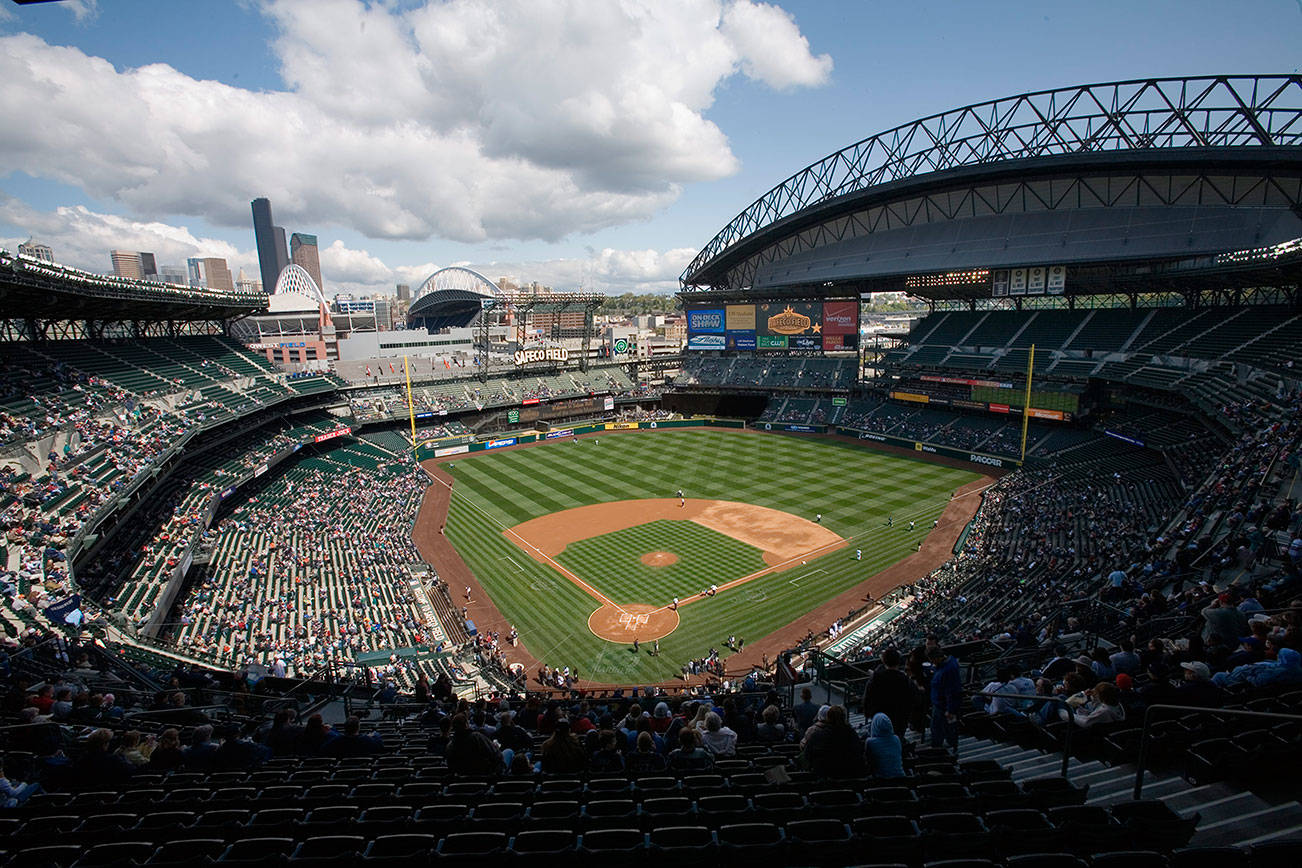While representatives of the Seattle Mariners were arguing before the King County Council that Safeco Field is a publicly owned facility and, as such, the county should contribute taxpayer funds for stadium upkeep, the club was also working on finding a new private company to buy the ballpark’s naming rights – which are up for grabs at the end of this year.
Back in 1998, a year before the stadium opened, car-insurance corporation Safeco signed on to a deal with the ballclub that landed its name on the stadium for two decades and put roughly $40 million in the Mariners’ coffers. Under the Mariners’ previous 20-year lease in the Seattle stadium, the club managed and accrued the financial benefits of stadium naming rights, even though the facility is technically owned by the Public Facilities District—a public entity appointed by the King County Council—and was financed primarily by taxpayers back in the 1990s.
Now the Mariners are looking for a new buyer. According to spokesperson Rebecca Hale, the club has not reached an agreement with one of three undisclosed firms that are potential buyers. “We do not yet have a naming-rights partner,” she said, adding that until a final new lease in the stadium is drafted and signed, the ballclub won’t actually be able to offer naming rights. Hale said that while the club has not settled on an exact dollar amount with any potential buyer, it will certainly be more than the $40 million that the club earned from its last deal. “It was a 20-year/$40 million agreement. That was 20 years ago. Now the market is very different,” she said.
Dan Barrett, executive vice president of consulting firm CAA ICON, served as the lead negotiator for the Public Facilities District during its talks with the Mariners to hammer out the terms of their new 25-year lease. He told the King County Council that they too expect the Mariners to earn “substantially” more than $40 million in their new naming-rights deal. Recent naming-rights deals for other sports stadiums have brought in significantly more that what the Mariners have earned over the past 20 years. In 2017, the Seattle Seahawks announced that CenturyLink would extend their naming rights through 2033 for $162.7 million. According to SportsBusiness Journal, a variety of recently constructed stadiums have garnered more than $200 million from naming-rights deals, such as Chase Center in San Francisco and MetLife Stadium in New Jersey.
As an original condition for signing their new 25-year lease, the Mariners had requested roughly $180 million in county money to fund Safeco Field maintenance, such as fixing the retractable roof and the HVAC system. After a majority of County Councilmembers agreed to invest $135 million in the stadium, representatives for the club have indicated the amount is satisfactory and that they will renew their lease.
Kevin Callan, executive director of the Public Facilities District, told Seattle Weekly that since the naming rights weren’t renegotiated between the district and the Mariners, the language from the previous lease regarding naming rights would likely get folded into the eventual new lease. “You can assume that. It will be handled very much the same way,” he said.
Councilmember Dave Upthegrove, first among his colleagues to publicly criticize the allocation of county funds to Safeco Field’s upkeep, has argued that the fact that the Mariners are the sole benefactors of the stadium naming rights undermines the notion that the stadium is in fact a publicly owned asset. “That stadium exists for the purpose of that one business … There’s absolutely no doubt in my mind that that is a stadium that was built for professional baseball and built for public dollars for them. This is a classic example that highlights that,” he told Seattle Weekly. “The fact that it was publicly paid for makes it even more egregious.”
The Mariners contend that they need the naming-rights revenue to meet all the maintenance and upgrade improvements that they will be liable to finance under the terms of the new lease. An outside consultant report identified close to $385 million in necessary upkeep: $200 million for basic maintenance and operations and $160 million for upgrades, such as a new brewpub.
“There is a huge amount of money that we are obligated to pay over the course of the new lease, and that money has to come from somewhere,” Hale said. “Concessions and other things that help bring in revenue, including the naming rights, is how we are able to pay for all of the obligations that we have for maintaining and operating this publicly owned building.”
At the Sept. 5 Council meeting when the amended spending plan to invest only $135 million in Safeco Field was approved, Upthegrove said, “If we are going to argue that this is a publicly owned stadium, then the public should get the naming rights.”
A final vote on the stadium spending plan is Sept. 17.


